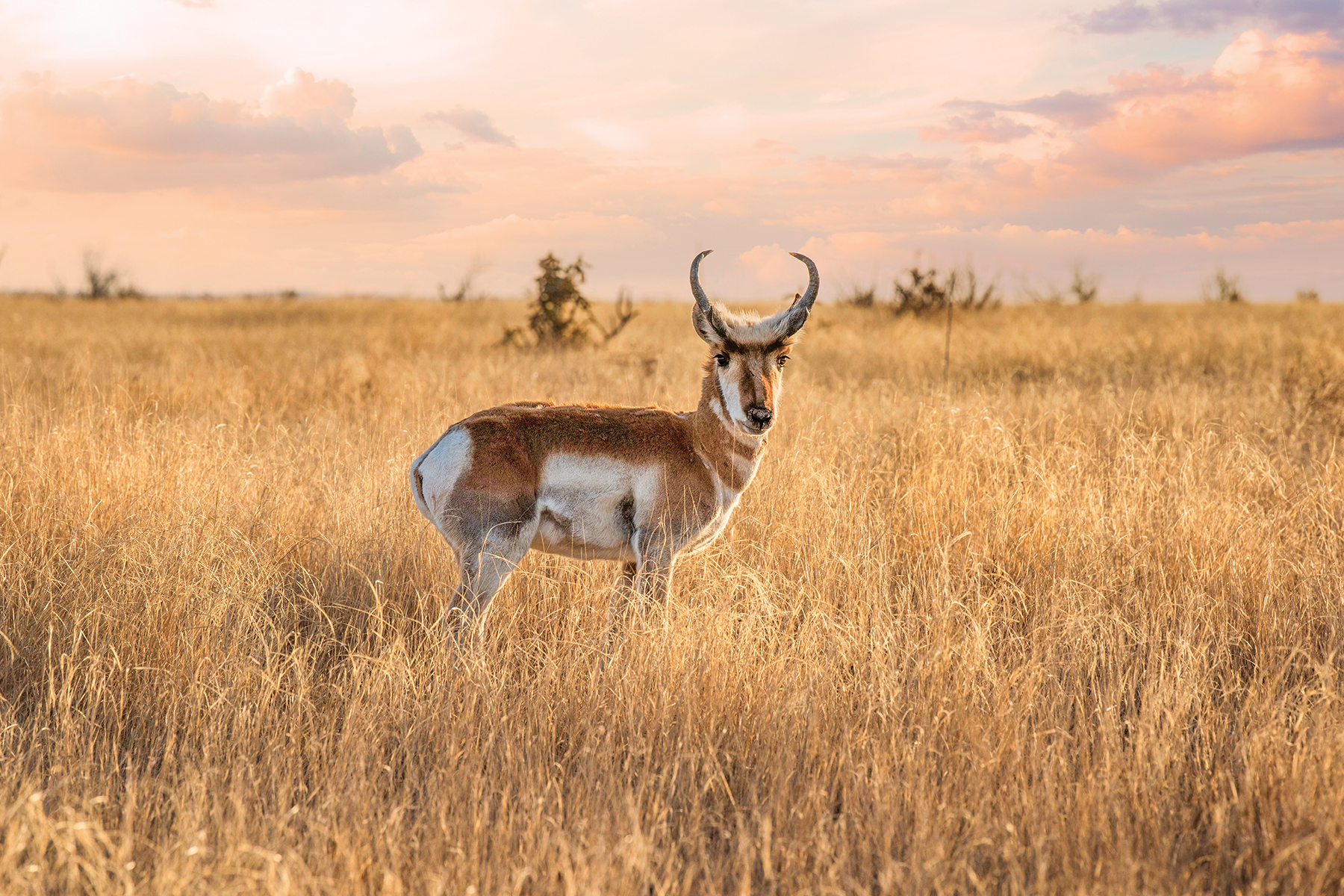One iconic figure might leap to mind when you think of the vast grasslands and open plains of West Texas: the pronghorn antelope. With their graceful forms, striking horns, and unbelievable speed, these animals are perfectly adapted to the wild expanses they call home. Let’s take a closer look at the unique traits of the pronghorn and why they’re such a beloved part of Texas wildlife.
Second Place Never Looked So Fast
One of the most fascinating things about pronghorn antelope is their speed. They’re the second-fastest land animal in the world, second only to the cheetah. While cheetahs may have the edge in short bursts, pronghorns are built for endurance. These Texas speedsters can run up to 60 miles per hour, making them the fastest animal in North America. To put that in perspective, they can outrun any predator on the continent, leaving coyotes, wolves, and mountain lions far behind.
Pronghorn are uniquely designed for this kind of speed. Their large windpipes, oversized lungs, and hearts enable them to take in more oxygen during a chase, while their long legs and padded hooves help them sprint across rough terrain.
Do Pronghorn Antelope Shed Their Horns?
Though many people mistakenly refer to the pronghorn as an antelope or even confuse it with deer, it’s actually neither. The pronghorn is the sole surviving member of the family Antilocapridae, a unique group that originated in North America. In fact, pronghorns are more closely related to giraffes than they are to antelope or deer!
One key difference between pronghorn and deer is in their horns and antlers. Deer shed their antlers entirely each year, while pronghorns have a bony core covered by a keratin sheath. Each year, they shed the outer sheath but retain the inner bone structure—something no other animal in North America does. And unlike true antelope native to Africa and Asia, pronghorn are exclusive to North America, with fossils suggesting their ancestors roamed the continent for over a million years.
So, while they may look like antelope or deer to the untrained eye, pronghorn are in a class of their own—an ancient and uniquely North American species.
The Pronghorn’s Unique Vision
Speed isn’t the pronghorn’s only defense. They also have extraordinary vision. Their eyes are positioned on the sides of their heads, giving them a field of view of nearly 320 degrees—almost like having built-in panoramic binoculars. They can detect movement from up to four miles away, making it extremely difficult for predators to sneak up on them.
Pronghorns and Texas Wildlife Management Best Practices
Pronghorn are native to the open grasslands and deserts of the western United States, with significant populations in West Texas. But despite their adaptability and speed, pronghorn have faced challenges over the years due to habitat fragmentation and loss of open range.
Conservation efforts in Texas, spearheaded by organizations like the Texas Parks and Wildlife Department, have been crucial in maintaining pronghorn populations. Landowners play a vital role in these efforts, especially when it comes to managing their land in ways that support healthy pronghorn habitats. Maintaining large, connected tracts of native grasslands and controlling invasive species that alter the pronghorn’s natural habitat are just a couple of ways that landowners can help.
The Pronghorn’s Mysterious Migration
Many Texas landowners may be surprised to learn that pronghorn are also migratory animals, traveling in search of food and water. In some areas of Texas, pronghorn herds migrate between different grazing grounds depending on the season. This makes it especially important for landowners and wildlife managers to maintain corridors that allow pronghorns to move freely without being obstructed by fences or other barriers.
One innovative solution has been the installation of “wildlife-friendly” fences, which have a lower bottom wire that pronghorn can easily crawl under. This small adjustment can make a big difference in ensuring that pronghorn populations can access the resources they need throughout the year.
Landowners can play a vital role in ensuring pronghorns thrive for generations to come by supporting conservation, maintaining open rangelands, and adopting wildlife-friendly land management practices.
Need help with your Wildlife Management Plans and Exemptions? We are here to help.









